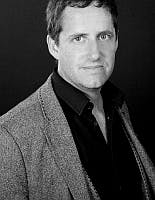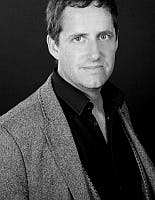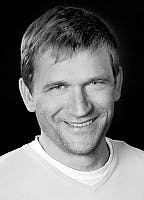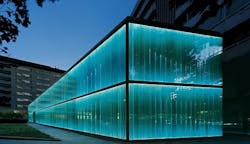At the 17th annual Strategies in Light (SIL) conference to be held on March 1–3, 2016 in Santa Clara, CA, a number of new LED lighting concepts and applications will be explored. Among these is the idea of embedded or integrated lighting in which LED lighting is incorporated as part of the building structure, using light as an actual architectural building block.
Interested in more articles & announcements on LED lighting?
A leading proponent of this concept is Eoin Billings, founding director of Billings Jackson Design, headquartered in London. The firm, founded in 1992, has won an international reputation for the product design it has done for manufacturers and for its expertise in delivering detailed design solutions for architects. At SIL 2016, Billings and his partner Duncan Jackson will give a presentation entitled “SSL as a Building Material: The Reinvention of Lighting Design.”
To provide a better understanding of the concept of integrated lighting, conference co-chair Bob Steele recently interviewed Eoin Billings. [Editor’s note: This interview has been edited for brevity and clarity.]
Steele: Can you discuss the background of the concept of integrated lighting?
Billings: There has been an amazing history of how architects have been working with light for many years in the context of integration where you couldn’t see the source. Recently, there have been a number of architectural projects in which light was an integral part of the thinking and became part of the design. We at Billings Jackson have been designing products to suit that desire from architects.
Photo credit: Roca showroom, Carlos Ferrater Architects
Steele: How do LEDs fit into the picture?
Billings: We hadn’t seen lighting designers working on embedded lighting for domestic applications unless it was for very high-value contracts. But we’re starting to see them working more on domestic developments, so that’s fairly new. They are trying to do more integral solutions, trying to understand LEDs and incorporate them into the building. So we are responding to that by creating ideas and solutions that could more easily be integrated into the fabric of the building. To me, that’s a reaction, almost. That’s what the lighting designers and architects want. They don’t want to see the sources unless the source is truly beautiful. There is a desire to have integral lighting, to have sheets of light and more of a sculpting a space out of light.
Related article: Land of context confusion
Steele: What do you see as the next steps in the evolution of integrated lighting?
Billings: I’m taking the subject a bit further and saying that this integration of digital lighting technology into buildings is an even further step in the digitization of buildings. But in addition to embedding or integration or whatever term you want to use, there is something new in that integration in the ability to control light is way beyond what was possible 10 or 15 years ago. And the desire to do it is there as well.
Steele: Do you see this as an element of what people are referring to as “human-centric lighting”?
Billings: Because you can now pretty much do anything, we’re saying that an integral part of our thinking should be “what do people need” and “what do people want” rather than “what can we make?” Industry talks about providing for circadian rhythm. What people need is better sleep. So we talk about letting people sleep better. Embedding light into the design and thinking about a space, and how it manifests itself is not the only driving issue. It’s the result of thinking about what people actually need or desire that leads to integrated solutions.
Integrating digital lighting is the tip of the iceberg in terms of digitizing our space and the objects around us. Everyone is talking about the Internet of Things [IoT], but realistically, from my (probably) more basic point of view, elements are coming under more control and it’s easier to communicate with objects because of digitization. Lighting is an obvious “first” item that will be integrated into buildings and the first place where real intelligence can take hold.
I want to talk about building integration beyond the physical, which is about integration and embedding objects. It’s more about function, more about the planning and the thinking behind creating living spaces. Light could be the vanguard of a new way of thinking about how buildings go together.
Steele: It sounds like integrated lighting is already getting a strong foothold in the lighting design and architectural worlds. Where do we go from here?
Billings: The embedding and integration are happening physically and aesthetically and architecturally, and it’s gorgeous and there is a history to that. But now with LEDs, even more is possible. You can make more beautiful spaces. You can do pretty much anything now if you have five chips and the right color mix and you have it on a flexible strip. You’re beginning to be able to put a light pretty much anywhere you want to.
Our new parameters (parameters that we should be using) are concerned with the people who occupy the building. Our approach is to take the five senses, the things that make up a person, and work on those to try to create an environment that’s much improved, with greater empathy and connection.
Register now for Strategies in Light and the co-located event The LED Show!
BOB STEELEis conference co-chair for Strategies in Light (strategiesinlight.com).
MORE ON SIL STRIKING POINTS:
SIL STRIKING POINT: The LED Show will spark smart city discussion
SIL STRIKING POINT: Connected lighting panel will debate protocols










